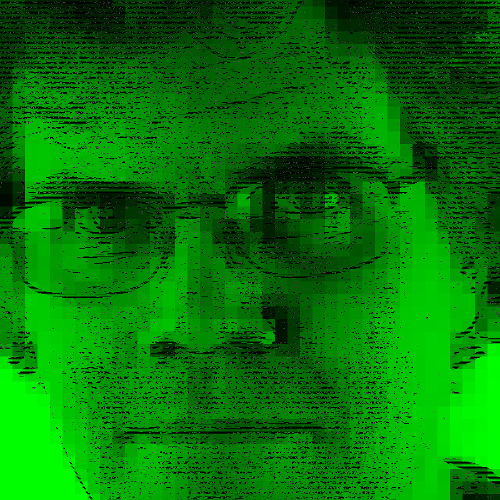These devices are meant to ease voting for folks who have a hard time marking a piece of paper. E.g., blind folks have trouble marking pieces of paper; but a BMD can read their choices out loud and let them vote by pressing buttons.
That's not why I used one today. I was just curious. These devices show up in arguments about secure voting. BMDs are computers. Manufacturers of election-related-computers have a bad history of making insecure machines (and then suing folks who report security problems). So folks get nervous about using these computers. If you hang out on the internet, you'll run into people saying that we should do away with BMDs. (I haven't seen any great answers to the questions "How would blind folks vote?") I'd read some social-network teapot-tempests on the topic… but I'd never actually seen such a device in action.
I'd hoped to see a BMD in use when I volunteered at a polling place back in 2018, but our device had languished on a table, unused. Then at poll worker training a few weeks back, our instructor told us volunteers that ¾ of us would never see someone use a BMD. To see one in use, I used one.
I guess they really are used only rarely. The nice Department of Elections lady at city hall was surprised when I asked to use the machine…she already had a paper ballot ready for me. She struggled to set the machine up. (There's some set-up: you have to tell the machine which precinct and party to use. Voters in different parts of the cities have different contests to vote on. There's a primary election happening, so the ballot is different depending on the voter's party preference.) The nice Elections lady was supposed to enter a number, but she struggled to figure out how to enter it. I don't think she was stupid; I don't think she was part of some voting-computer-fraud conspiracy. I think folks just use these machines very rarely and she'd never set one up one before.
Once the machine was set up, I sat and interacted with its touch screen to make my choices. When I was done, I pressed a button to print out my ballot: one 8½✕11 piece of paper with a complex QR code, some numbers, and my votes in plain legible printing. That last part made me happy: my intent had been recorded on that piece of paper. Even if mean hackers disrupted the vote, auditors or recount-folks could look at that piece of paper and know what choices I'd made. Thus, this BMD-produced ballot was about the same, security-wise, as a hand-marked ballot.
That's not to say that BMDs are risk-free. Though the paper trail makes it hard to sneakily steal an election, mean hackers could still disrupt it. E.g., if I'd sat down at that computer and it had started playing the Michigan Wolverines Fight Song, I would have lost faith in the election process. It's tough to hack pieces of paper like that. But such a hack didn't happen today. Things went OK today.
It's good to try these things that folks on the internet are screaming bloody murder about to find out that, once again, the world has not ended.
